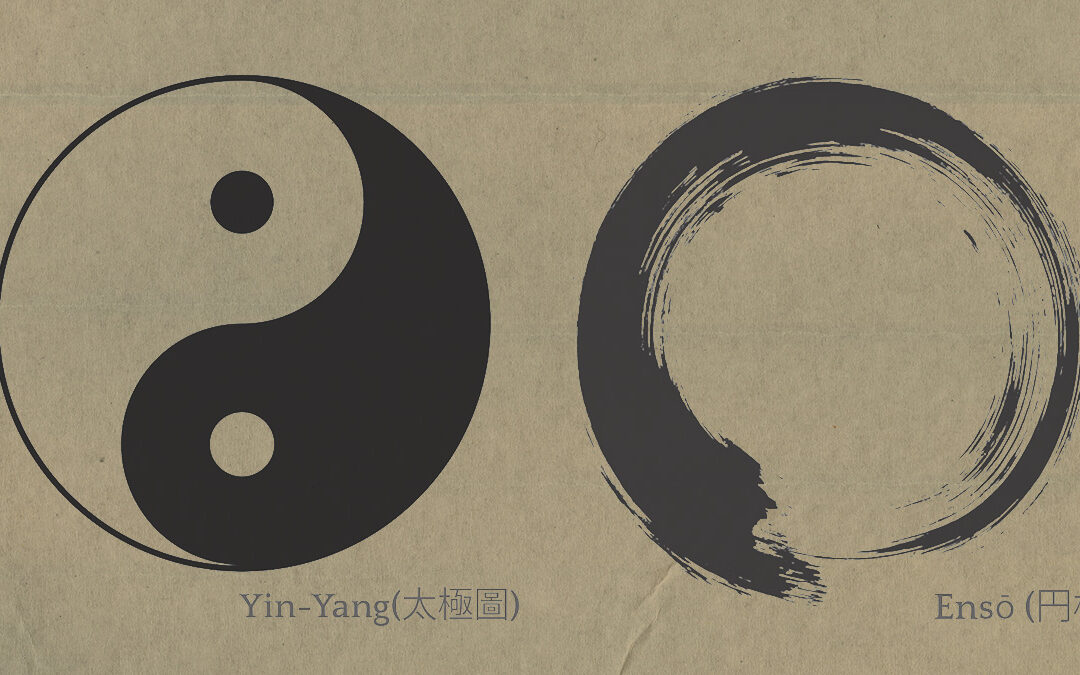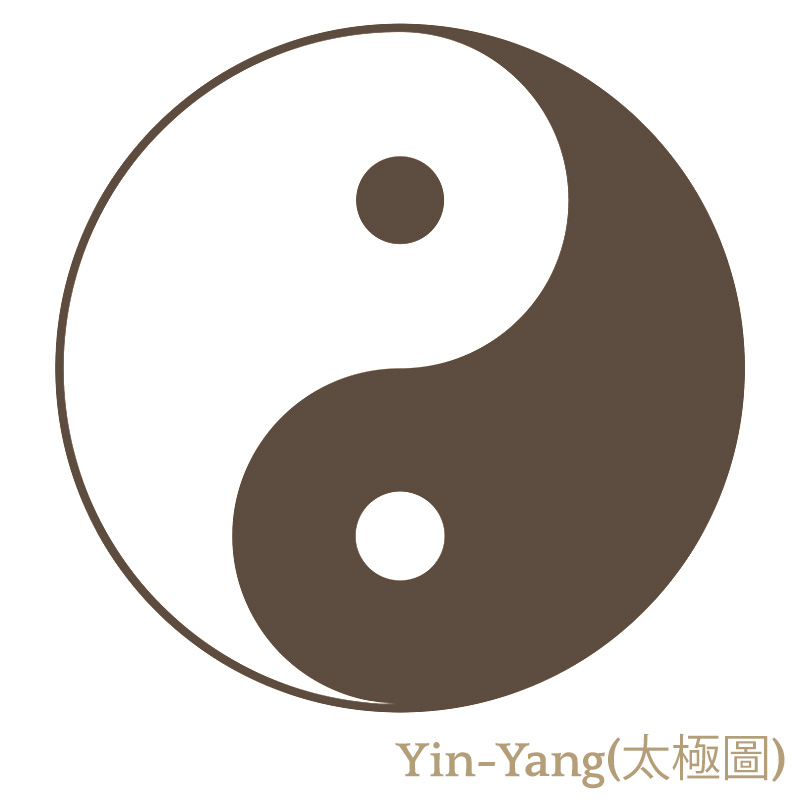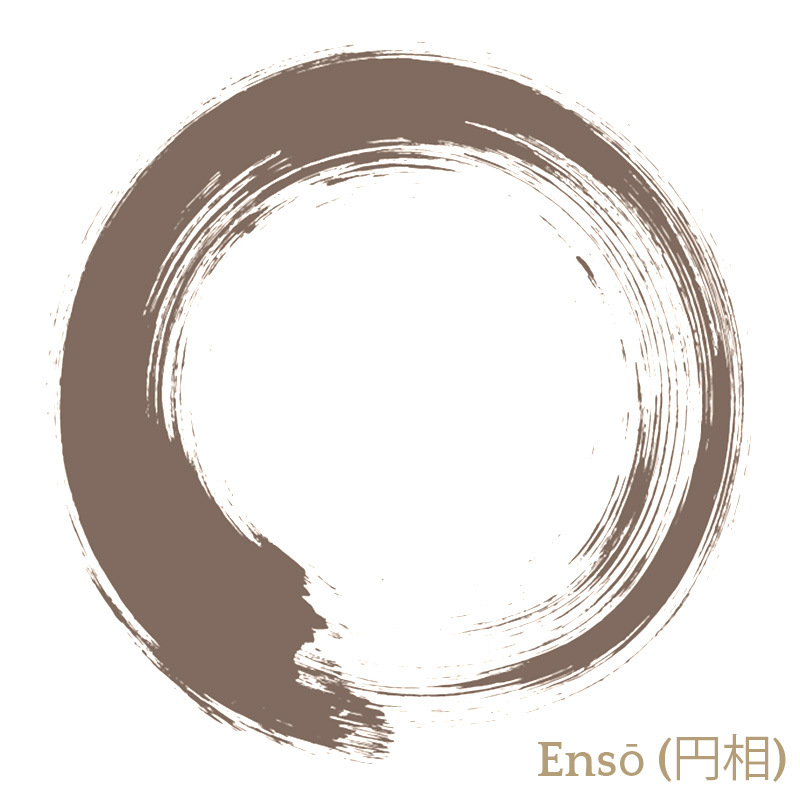The Quick Answer (TL;DR)
- The Yin-Yang (Taijitu) and the Ensō are two iconic circles in Eastern philosophy, but they come from different traditions.
- Yin-Yang is Taoist: it represents the dynamic balance of opposites within the Tao.
- The Ensō is Zen Buddhist: a brush-drawn circle symbolizing emptiness, enlightenment, and presence in the moment.
- Because both are circular and evoke balance and emptiness, many people confuse them. Yet, they come from different traditions and carry unique meanings.
The Yin-Yang: Taoist Symbol of Balance
The Taijitu (太極圖), commonly called Yin-Yang, is perhaps the most recognizable Taoist symbol. The circle is divided into black and white halves, each containing a dot of the opposite color.
- Origin: Ancient China, associated with Taoist cosmology.
- Meaning: Enlightenment, wholeness, and the beauty of the imperfect, spontaneous moment.
- Taoist insight: The Tao is the underlying unity that holds these opposites together. Nothing is purely yin or purely yang; each transforms into the other.
This symbol connects with key Taoist ideas:
- Wu (emptiness): the fertile void from which all arises.
- Ziran (spontaneity): the natural unfolding of life.
- Qingjing (clarity and stillness): the inner state that aligns us with the Tao
The Ensō: Zen Symbol of Emptiness and Wholeness
The Ensō (円相) is a circle painted in one brushstroke, central to Japanese Zen aesthetics. Unlike the geometric balance of the Yin-Yang, the Ensō is often irregular, open or closed, thick or thin—each brushstroke unique.
- Origin: Zen Buddhism in Japan, influenced by Chinese Chan.
- Meaning: Enlightenment, emptiness, imperfection, and wholeness all at once.
- Zen insight: Painting an ensō is an act of mindfulness. The brush reveals the state of the practitioner’s mind in that instant—calm, distracted, free, or attached.
Where Taoist symbols describe the cosmos, the Ensō expresses direct experience. It embodies the Zen emphasis on presence, spontaneity, and the acceptance of imperfection.
Yin-Yang vs Ensō: Similarities and Differences
| Aspect | Yin-Yang (Taoism) | Ensō (Zen) |
|---|---|---|
| Origin | Ancient China | Japanese Zen Buddhism |
| Focus | Cosmology and balance of opposites | Mindfulness and direct experience |
| Shape | Divided circle with duality | Single brushstroke circle |
| Meaning | Dynamic flow of yin and yang | Emptiness, enlightenment, imperfection |
| Concepts | Tao, Wu, Ziran, Qingjing | Sunyata (emptiness), mindfulness |
Despite these clear differences, there is also a historical and philosophical reason why the two symbols often feel connected.
Similarities:
- Both are circles expressing unity and the ineffable.
- Both emphasize harmony, balance, and emptiness.
Differences:
- Yin-Yang describes universal laws of change.
- Ensō shows the state of the mind in a single moment.
Why People Connect Them
Zen Buddhism emerged in China as Chan, where it absorbed Taoist influence. The Taoist idea of wu wei (effortless action) and ziran (naturalness) shaped how Chan approached meditation and daily life. When Chan traveled to Japan and became Zen, these influences remained.
That is why the Ensō, though Buddhist, resonates with Taoist values of spontaneity, emptiness, and simplicity.
The Taoist concept of Wu (無)—emptiness as the fertile source from which all things arise—finds a direct echo in the Zen Buddhist notion of Śūnyatā (emptiness), embodied in the Ensō. Both point toward a primordial, non-conceptual reality beyond forms
Two Paths, One Insight
The Yin-Yang invites us to see the cosmos as a dance of opposites. The Ensō reminds us to meet each moment with clarity and openness.
One is cosmological, the other experiential. Yet both point to the same mystery: that beyond words and forms lies a reality we can only touch through presence.
“The Tao that can be spoken is not the eternal Tao.”
Tao Te Ching
By contemplating these circles, we glimpse how Taoism and Zen, though distinct traditions, converge in their reverence for what cannot be named but can be lived.
FAQs: Simple Answers to Common Questions About Yin-Yang and Ensō
Is Yin-Yang Taoist or Buddhist?
Yin-Yang, also called the Taijitu (太極圖), is a Taoist symbol. It represents the balance of opposites—yin and yang—as expressions of the Tao.
Is the Ensō a Taoist symbol?
No. The Ensō belongs to Japanese Zen Buddhism. It is drawn in a single brushstroke and reflects emptiness, enlightenment, and the uniqueness of each moment.
What does Yin-Yang mean in simple terms?
It shows how opposite forces—light and dark, active and passive—depend on each other and constantly transform into one another.
What does the Ensō mean in Zen?
The Ensō symbolizes emptiness, imperfection, and wholeness. Each circle is unique and reveals the state of mind of the practitioner at the moment of creation.
Why are Yin-Yang and Ensō often confused?
Because both are circular and evoke unity and balance. However, Yin-Yang is cosmological, describing the universe, while the Ensō is experiential, expressing mindfulness and presence.
Can these two symbols be combined?
While they come from different traditions, many practitioners today see them as complementary. Yin-Yang reminds us of the universal dance of opposites, while Ensō points to the immediacy of awakened experience.



